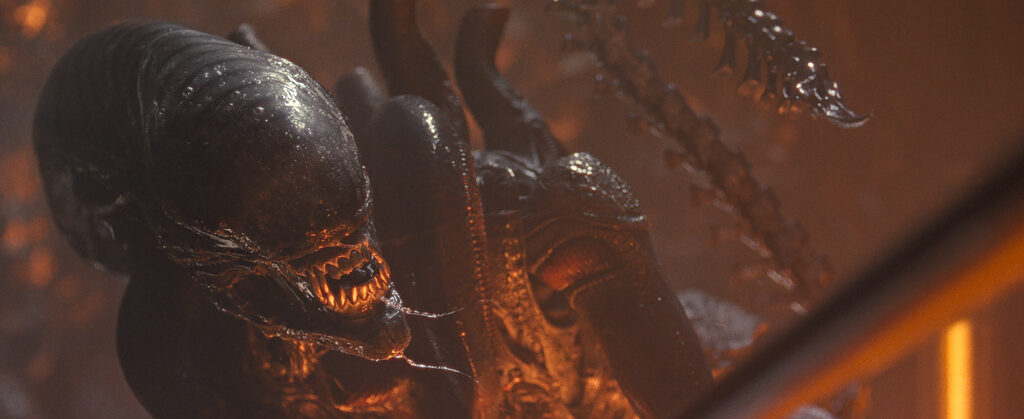‘Alien: Romulus’ Is a Reminder of the Terrors That Lurk in the Deep — and Within
Like any good scare, much of the terror here is anticipatory, the fear that catches in a bated breath.

‘Alien: Romulus’
20th Century Studios
Directed by Fede Alvarez
Produced by Ridley Scott
The seventh installment in the “Aliens” franchise knows where its space age bread is buttered. Some 45 years after the first movie introduced the world to actor Sigourney Weaver’s sinuous steeliness and Swiss artist H.R. Giger’s unnerving creatures, “Alien: Romulus” is a blockbuster of the deep black. It leaves the mysteries of the cosmos for minds at ease. Everyone here is just trying to avoid being ripped limb from limb — or even worse.
“Romulus” unfolds in a distant future whose technology appears distinctly analog, an homage to the series’s heyday in the last two decades of the 20th century. It is as if an Atari video game system could power travel paced to the speed of light. It is set between the franchise’s two greatest films — the director Ridley Scott’s original “Alien” and James Camero’s gonzo sequel, “Aliens.” This makes “Romulus” neither a prequel nor a sequel, but rather a riff.
The director is Fede Alvarez. He cut his teeth by directing horror films like “Don’t Breathe” and “Evil Dead.” The producer is the franchise’s eminence grise, Mr. Scott, who directed the last two films with a heavy dose of gravitas — verging on the ponderous. “Romulus” tracks a cadre of street urchins trying to flee a polluted planet for more inviting interstellar pastures. It is paced to a pounding heartbeat and directed to a new generation.
The tagline of “Alien” was, “In space, no one can hear you scream,” and that thesis is quickly tested. The film’s protagonist, Rain (Cailee Spaeny), has something of Ms. Weaver’s ability to register fear and summon the bravado to overcome it. As in the original, it is the cyborgs, here called “synthetics,” who distill the film’s thinking about the line between human and non-human. The “synth” Andy, played with nuance by David Jonsson, does honor to that lineage.

The real stars are the aliens themselves, called “Xenomorphs.” For nearly half a century, these monsters have achieved a lasting place in the pantheon of terror. They hatch from eggs, like godforsaken larvae, and mature into “face huggers” with eight finger-like legs and long tails. Once they find a host — a human — they implant in him or her an embryo that in short order bursts forth. The franchise has made great hay of twinning the terrors of infection and childbirth.
Not to be outdone are the full-size aliens themselves, which run on two feet, climb walls, and bear not one but two sets of flesh-tearing teeth. The aliens are both hunters and pathogens, and Mr. Alvarez unleashes them with skill on a decaying space station, making it something like a haunted house in orbit. Like any good scare, much of the terror here is anticipatory, the fear that catches in a bated breath. Space comes off as claustrophobic.
Other than Ms. Spaeny and Mr. Jonsson, “Romulus” lacks the star power that has buoyed earlier entries in the series. Its final act, which leans into the interest in biology and contamination that has thrummed throughout the franchise, is sure to delight some viewers and disgust others. Mr. Alvarez is not insensate to the dark beauty that has always marked the series. The creatures gleam and even dance in a zero-gravity Danse Macabre, blood hovering like clouds.
The franchise has always been interested in human fragility, exposed not only by how many of them fall prey to the monsters, but also by the inhospitable conditions of space. “Romulus” is a new edition of this warning against exploration, a tale told against hubris. Where humans travel they find horror, and then they become carriers of that curse. There are no happy endings. As John Milton has Satan lament, “Which way I fly is hell; myself am hell.”

